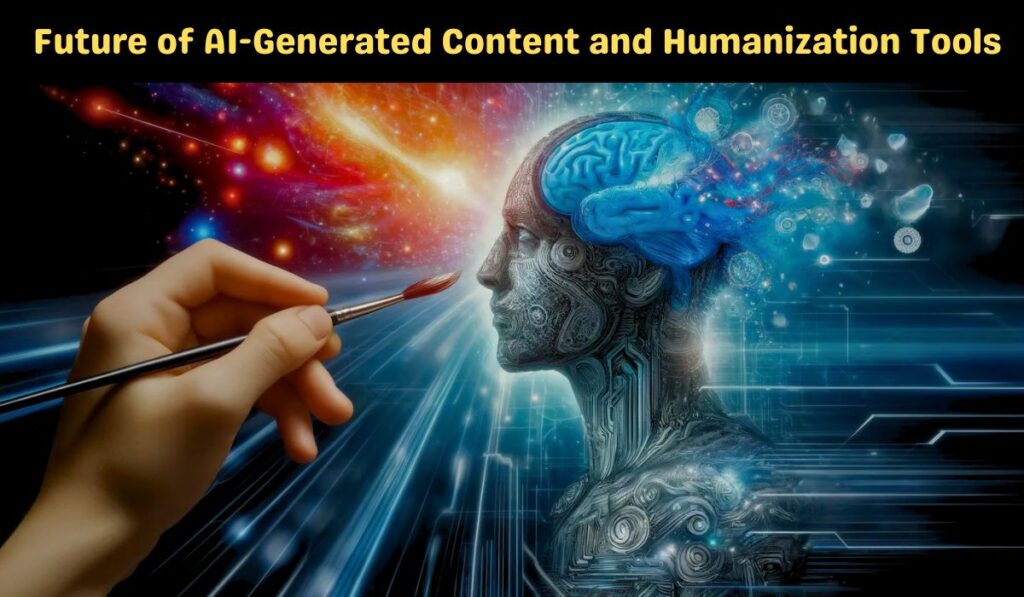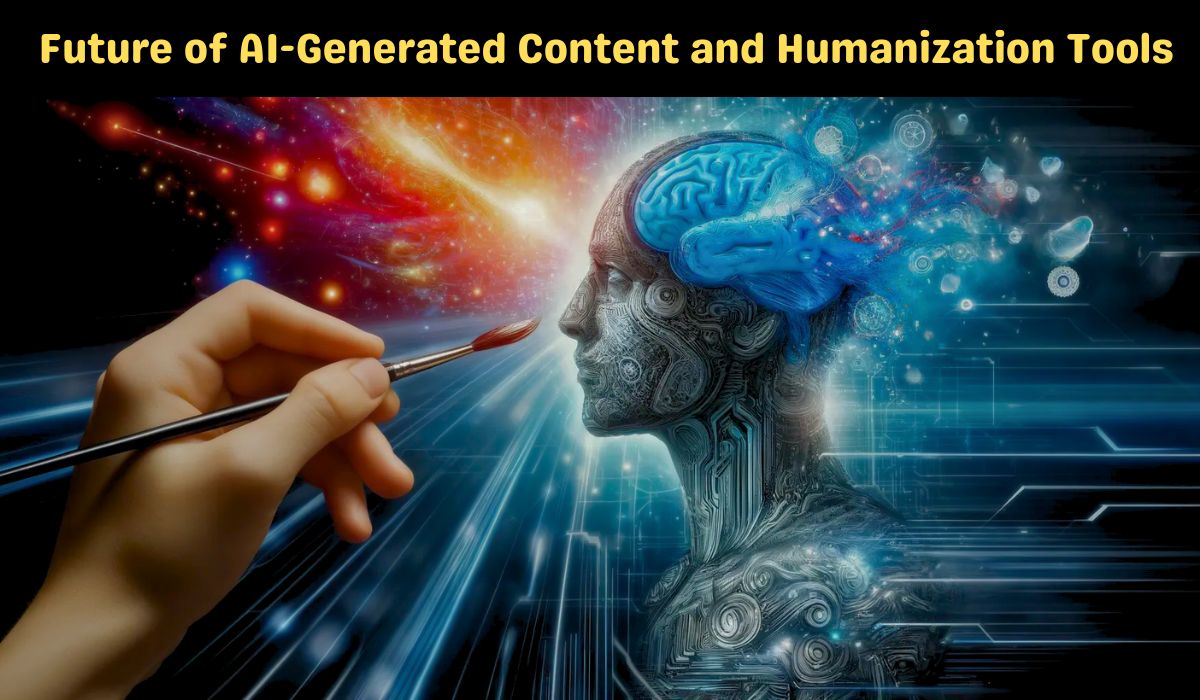As artificial intelligence (AI) continues to evolve, its impact on content creation is becoming undeniable. Businesses, marketers, and writers are increasingly turning to AI-generated content to save time, increase efficiency, and scale production.
However, the challenge lies in ensuring that this AI-generated content resonates with human readers, which has led to the rise of humanization tools. These tools aim to make AI content more authentic, engaging, and valuable for users.

In this article, we’ll explore the future of AI-generated content, the importance of humanization, and how businesses can leverage AI while ensuring their content meets human needs.
The Rise of AI-Generated Content
AI-generated content is not a new concept, but recent advancements in machine learning and natural language processing (NLP) have propelled it into the spotlight.
Tools like GPT-4, OpenAI’s ChatGPT, Jasper, and Copy.ai have revolutionized the way content is created. These platforms can generate blog posts, product descriptions, social media content, and even more complex pieces like research articles in a fraction of the time it would take a human writer.
Key Benefits of AI-Generated Content
- Speed and Efficiency: AI can generate thousands of words within minutes, helping businesses scale content production rapidly.
- Cost-Effectiveness: Compared to hiring multiple content creators, AI offers a more affordable solution, especially for businesses with tight budgets.
- Consistency: AI tools ensure content remains consistent in tone and style, which is essential for brand identity.
However, AI-generated content, while fast and scalable, often lacks the nuance and emotional depth required to engage human readers fully. This is where humanization tools come in.
The Need for Humanization Tools
As AI-generated content becomes more prevalent, businesses and marketers are starting to recognize the importance of humanizing this content. Why? Because readers can easily spot inauthentic or robotic writing, which can hurt a brand’s credibility.
Humanization tools help bridge the gap between machine-generated content and the need for authentic, relatable, and engaging writing. These tools refine AI-generated text, adding a human touch that resonates better with audiences.
Why Humanization is Crucial for SEO and User Experience
- Building Trust and Authenticity: People trust content that feels authentic. AI-generated text can often sound monotonous or overly formal. By humanizing content, businesses can create a sense of trust and build stronger relationships with their readers.
- Creating Emotional Connections: Humanized content is more likely to evoke emotions and create lasting impressions. Whether through storytelling, humor, or empathy, emotionally resonant content encourages readers to engage and take action.
- Improving Readability and Engagement: AI-generated content may sometimes lack flow, resulting in awkward phrasing. Humanization tools ensure that the content is easy to read and follows natural language patterns, enhancing engagement.
- Adhering to Google EEAT Principles: Google’s EEAT (Expertise, Authoritativeness, Trustworthiness) principles emphasize the importance of content quality. Humanizing AI-generated content ensures that it meets these standards, leading to better rankings and improved SEO performance.
How Humanization Tools Work
Humanization tools take AI-generated content and transform it into more conversational, relatable, and contextually accurate pieces. Here’s how they work:
1. Tone Adjustment
Humanization tools analyze the tone of AI-generated text and adjust it to fit a desired style. For example, a marketing article might need a friendly and conversational tone, while a technical blog post might require a more formal approach.
2. Sentence Structure Optimization
AI-generated content often results in rigid, repetitive sentence structures. Humanization tools break up these patterns, ensuring a natural flow and more varied sentence length. This makes the content feel less robotic and more dynamic.
3. Vocabulary Enhancement
AI sometimes produces overly simplistic language. Humanization tools enrich the text by incorporating synonyms, idiomatic expressions, and more complex vocabulary that matches the intended audience’s sophistication.
4. Personalization and Storytelling
Humanization tools integrate storytelling elements to make content more relatable. This could involve adding personal anecdotes, using second-person pronouns like “you,” or framing content in a way that feels personal to the reader.
AI vs. Human Writers: A Collaborative Future
As we look to the future, it’s not a question of whether AI will replace human writers but how AI and human writers can collaborate effectively. AI will likely continue to handle repetitive or time-consuming tasks, such as generating drafts, performing SEO keyword research, or optimizing for readability. Meanwhile, human writers will add creativity, emotional intelligence, and critical thinking—areas where AI falls short.
Real-Life Example: AI in Journalism
In journalism, AI has been used to generate data-heavy reports, such as sports recaps or stock market summaries. These reports are factual but lack the depth and storytelling that human journalists provide. By using AI to handle initial drafts and letting journalists refine and humanize the content, news organizations can publish faster without sacrificing quality.
The Role of Editors in the Future of AI Content
Editors will play a crucial role in the future of AI-generated content. They will act as the bridge between raw AI-generated drafts and polished, humanized content. Editors will ensure that the content aligns with the brand’s voice, meets audience expectations, and adheres to SEO best practices.
The Future of Humanization Tools
The future of humanization tools looks promising, with continuous advancements in machine learning. As AI-generated content becomes even more prevalent, humanization tools will need to evolve, offering more nuanced and sophisticated capabilities.
What Can We Expect?
- More Accurate Tone Detection: Future tools may become better at detecting specific tones based on context, ensuring content aligns with the intended emotion (e.g., excitement for product launches, empathy for customer service responses).
- Cultural Sensitivity and Contextual Awareness: As AI advances, humanization tools will likely become more adept at understanding cultural nuances, ensuring that content remains relevant across diverse audiences.
- Integration with AI Writing Assistants: We can expect deeper integration between AI writing tools and humanization software, allowing for real-time editing, tone adjustments, and improved sentence flow as content is being generated.
FAQs about AI-Generated Content and Humanization Tools
Q. What is humanized AI content?
Humanized AI content refers to text generated by AI that has been refined using humanization tools to sound more natural, engaging, and relatable to human readers. It involves adjusting tone, vocabulary, and sentence structure to make the content feel more authentic.
Q. Can AI-generated content rank well on Google?
Yes, AI-generated content can rank well on Google if it is properly optimized for SEO and adheres to Google’s EEAT principles. However, humanizing AI content is crucial for ensuring readability, engagement, and credibility.
Q. Are humanization tools expensive?
The cost of humanization tools varies, but many offer affordable subscription plans. Some tools may also be integrated with existing AI writing platforms, making them cost-effective for businesses that already use AI for content generation.
Q. How do humanization tools improve SEO?
Humanization tools enhance the readability and engagement of content, which are important factors for SEO. By improving the natural flow and ensuring the content resonates with users, businesses can reduce bounce rates and increase time on page, both of which positively impact SEO rankings.
Q. Can AI replace human writers?
While AI has advanced significantly, it cannot fully replace human writers. AI is excellent at handling repetitive tasks and generating drafts, but human writers bring creativity, emotional intelligence, and subject matter expertise that AI cannot replicate.
Conclusion
The future of AI-generated content and humanization tools is bright, with both playing an increasingly important role in content creation. As AI becomes more capable, businesses must recognize the need to humanize this content to ensure it resonates with their audience and aligns with SEO best practices.
By combining AI efficiency with the creativity and emotional depth of human writers, businesses can produce high-quality content at scale, ensuring they stay ahead in the ever-evolving digital landscape.
As we look ahead, the integration of humanization tools will be key to making AI-generated content more authentic, engaging, and valuable for readers. By leveraging these tools, businesses can unlock the full potential of AI while maintaining the human touch that audiences crave.

